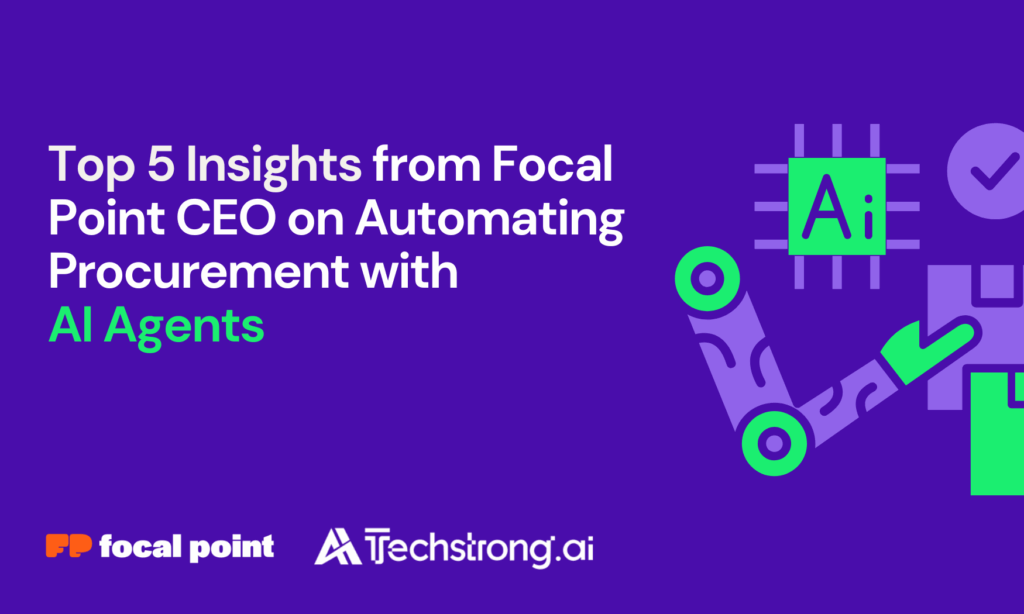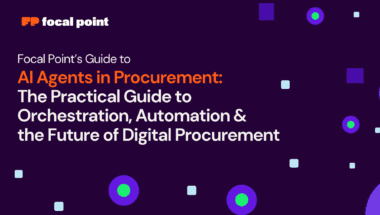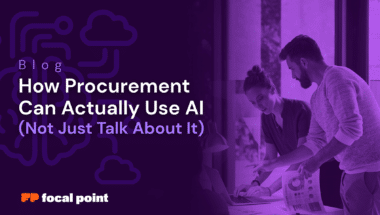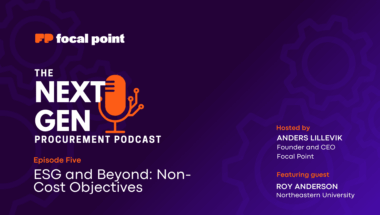What this is:
This list highlights five key takeaways from Anders Lillevik’s Techstrong.tv interview about how AI agents are transforming procurement.
Who it’s for:
Procurement leaders, digital transformation teams, and C-suite executives looking to streamline operations and make smarter business decisions.
Why it matters now:
Procurement is becoming more complex and more strategic. AI agents offer a practical way to simplify processes, eliminate manual work, and increase decision speed – without requiring full system overhauls.
Summary:
These insights explain why AI agents are no longer optional, but essential to modern procurement strategies.
1. AI Agents Eliminate Procurement Bottlenecks
Procurement processes are often delayed by manual triage, siloed systems, and unclear ownership. AI agents solve this by intelligently routing requests and flagging blockers before they escalate.
Anders explains that AI agents act as always-on assistants that understand rules, roles, and priorities – helping teams work faster without adding headcount. This frees procurement from firefighting mode and gives teams more control over their workflows.
2. Manual Processes Still Dominate Procurement – But Don’t Have To
Despite advances in enterprise tech, many procurement teams still rely on email, spreadsheets, and custom forms. These tools create friction, slow down approvals, and make reporting nearly impossible.
Anders points out that automation isn’t about replacing people – it’s about offloading repetitive tasks so procurement can focus on value creation. With the right setup, even complex workflows can run without constant intervention.
3. AI Helps Procurement Act Strategically, Not Reactively
Procurement teams are expected to drive savings, ensure compliance, and support business goals – but reactive tools make that difficult. AI agents surface data in context, enabling real-time visibility across the procurement lifecycle.
Focal Point’s approach is to turn “view-only” dashboards into active platforms, where teams don’t just track work – they act on it immediately. That shift unlocks strategic potential across every procurement touchpoint.
4. Automation Must Fit Into Existing Systems, Not Replace Them
One of the biggest blockers to procurement modernization is the fear of ripping out legacy tools. Lillevik emphasizes that AI agents should sit on top of what companies already use, integrating through APIs and workflows.
Focal Point’s platform doesn’t require replacing ERPs or S2P systems – it enhances them. That interoperability lowers implementation barriers and accelerates time-to-value for procurement teams.
5. The Future of Procurement Is Agent-Driven and Outcome-Focused
Procurement leaders are looking beyond basic task automation. They want AI that understands business goals, tracks outcomes, and recommends next steps based on context.
Focal Point’s vision is an agent-driven future where procurement becomes a source of strategic insight, not just a cost control function. That evolution begins with intelligent automation and grows into continuous optimization.
Conclusion:
Procurement is being redefined by AI agents that bring speed, structure, and intelligence to the process. As companies navigate economic pressure, operational complexity, and digital transformation, adopting agent-driven automation is becoming a critical advantage. The message from Focal Point’s CEO is clear: automation isn’t coming – it’s already here, and it’s time to act.
Click here to view the whole interview with Anders on Techstrong TV.



